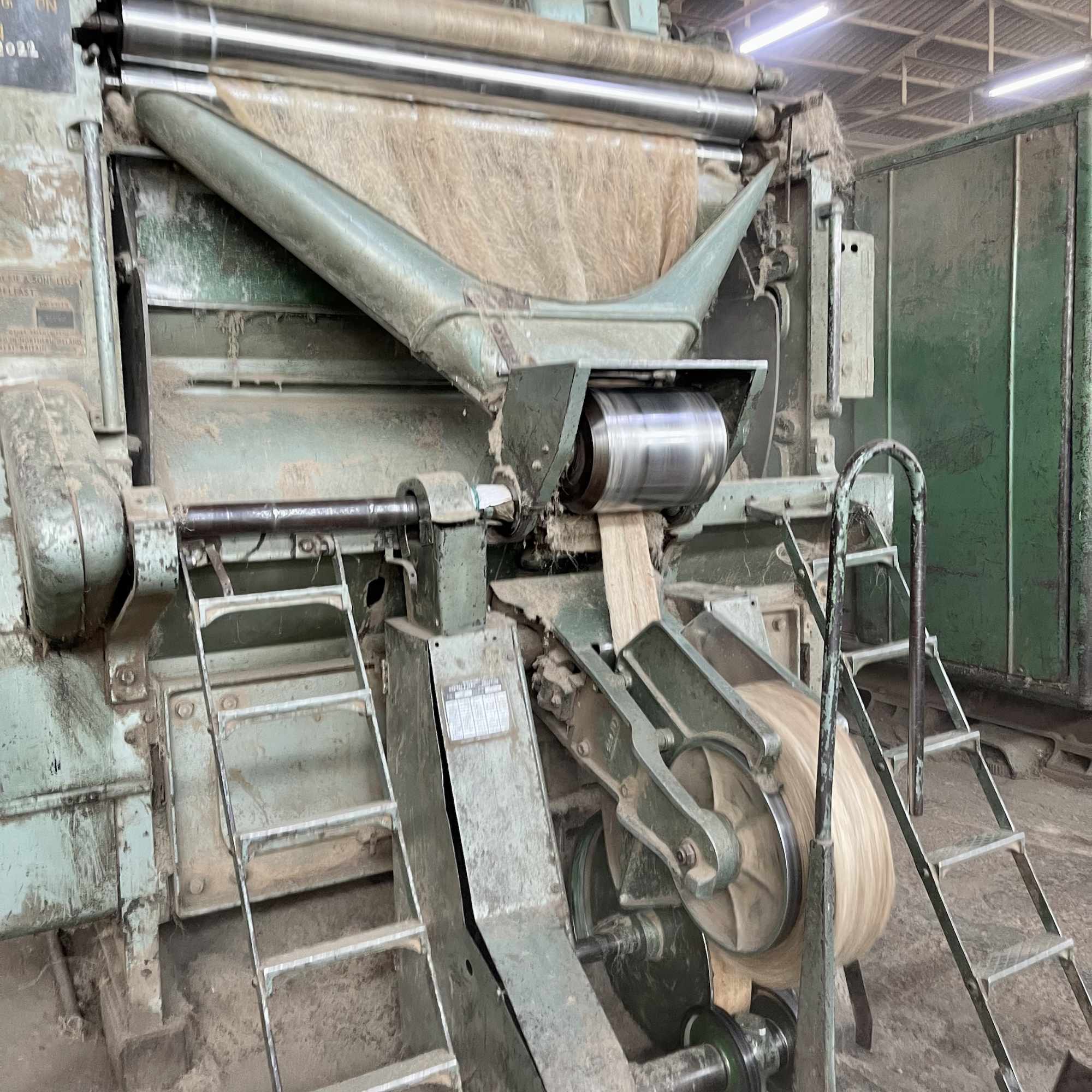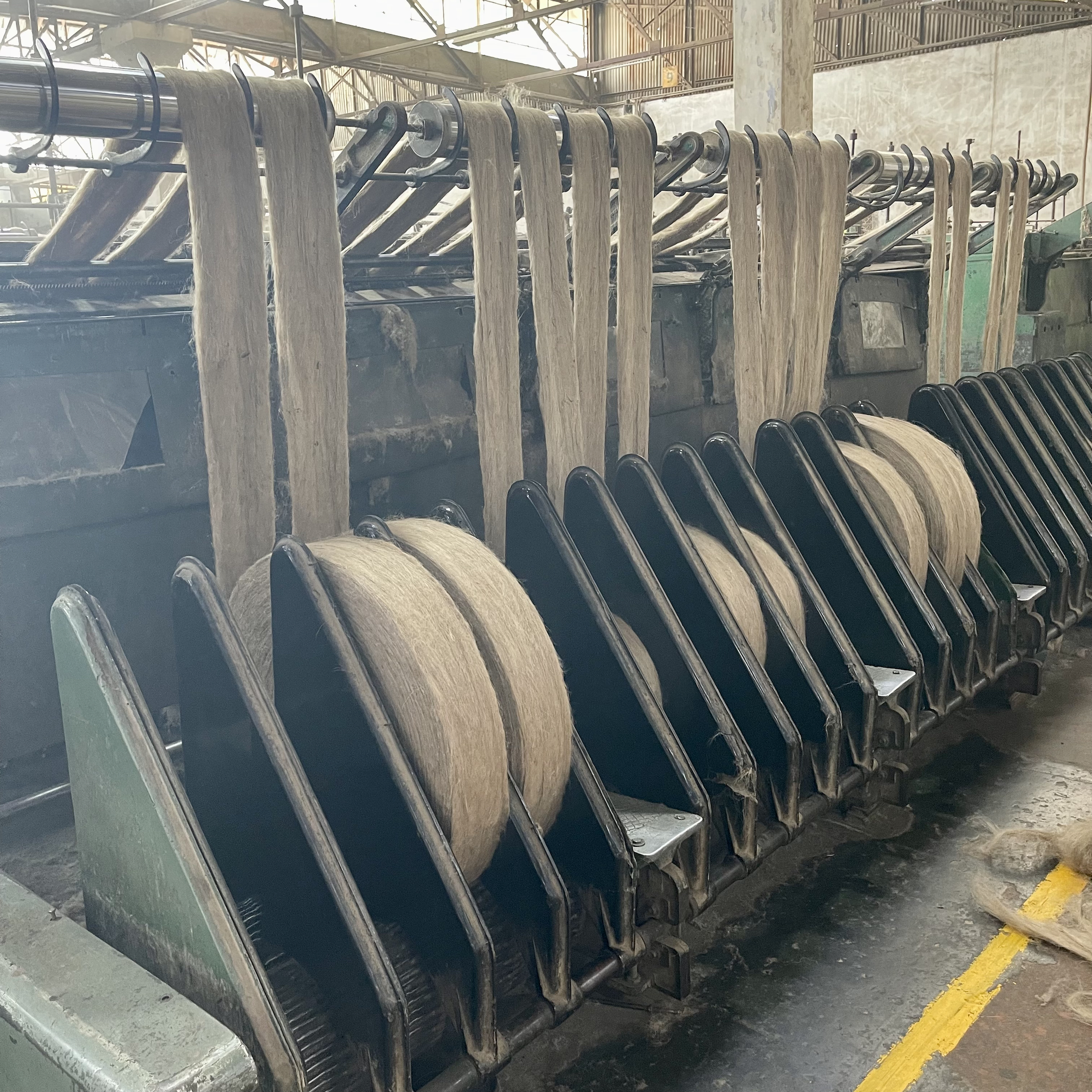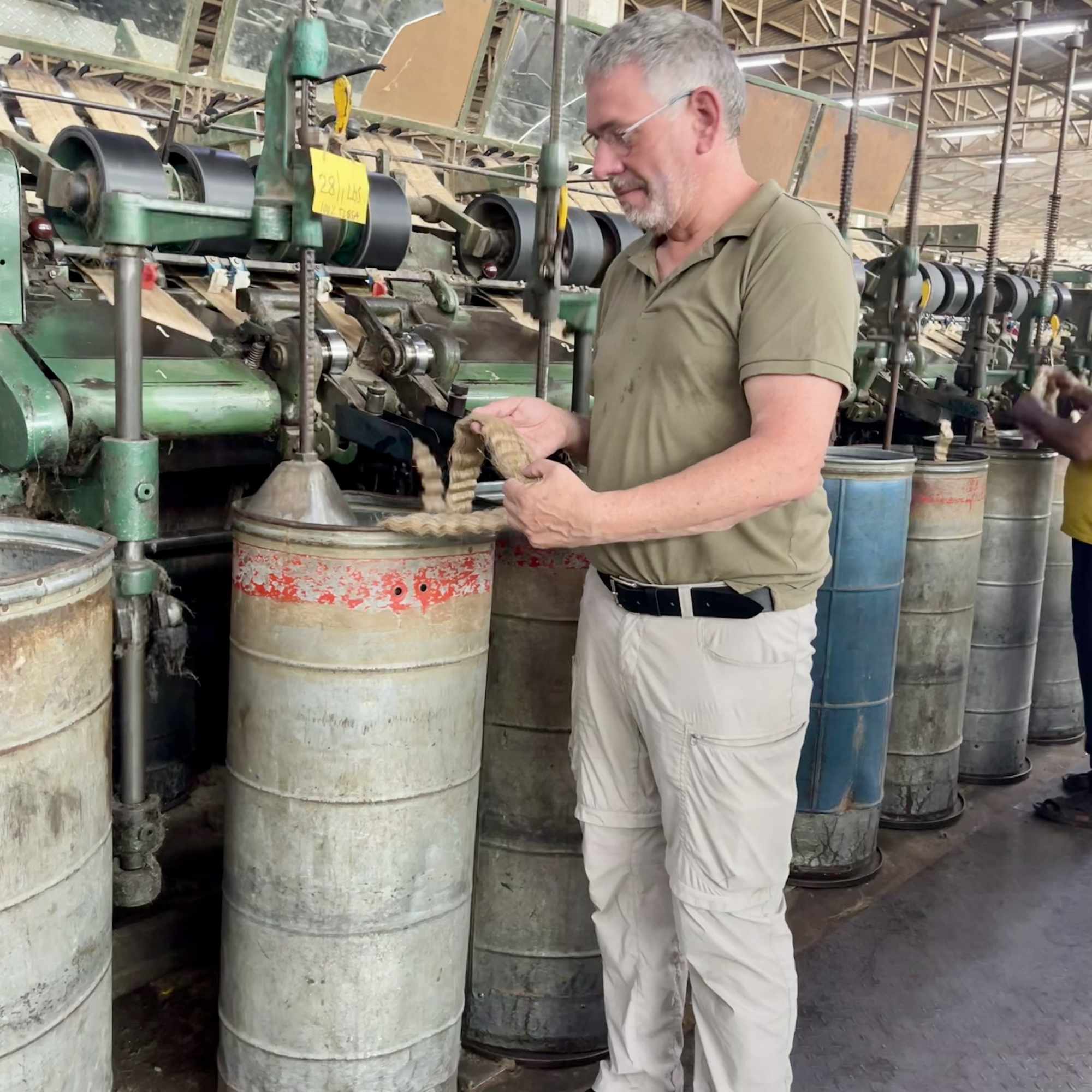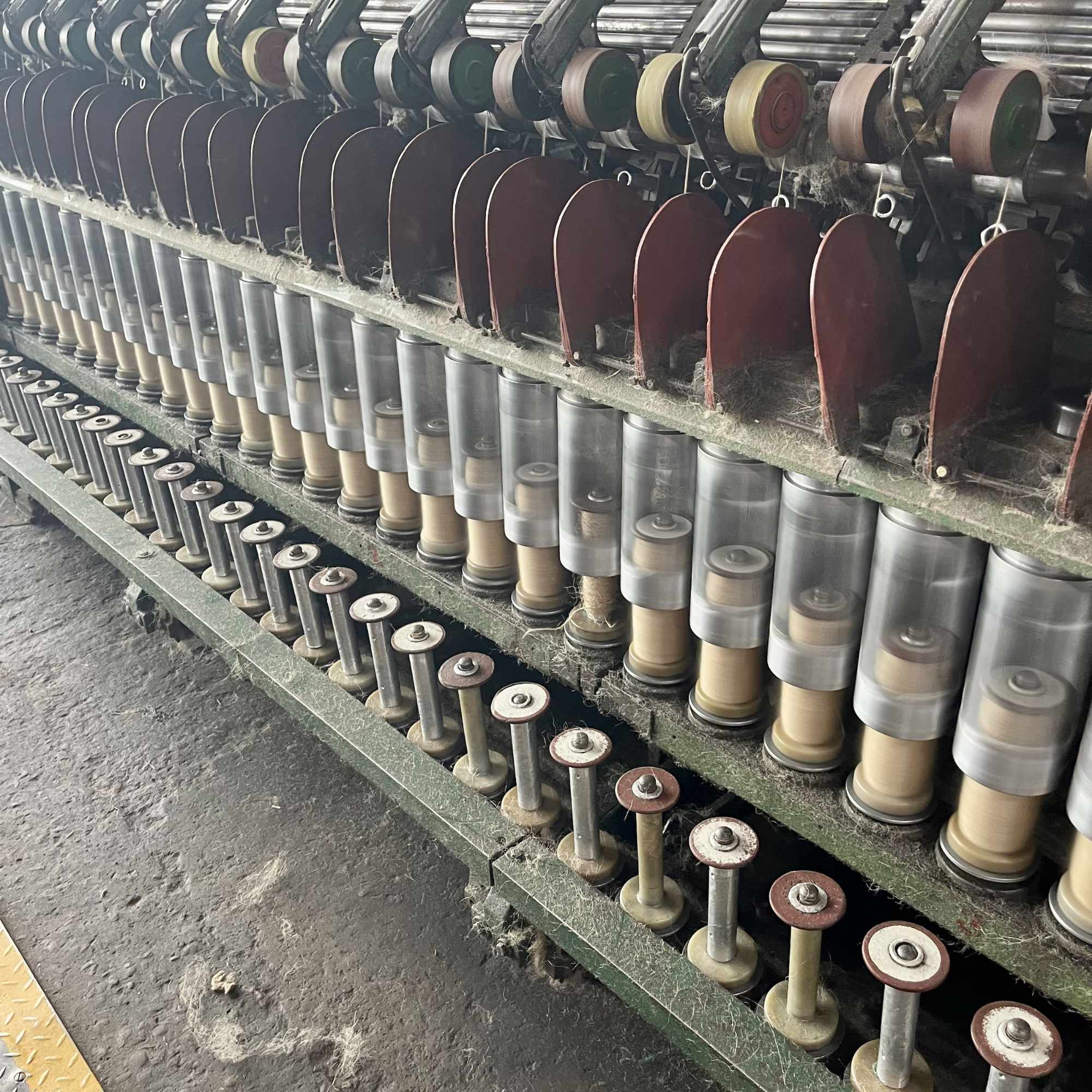The Jute Story: yarn production
PART 4/5
Once the raw jute has been batched and piled, it’s ready to move through the processing steps – carding, drawing and spinning to produce yarn.

At the mill that supplies the yarn for our Jouyoku rope products, after a reel of jute fibre has been batched and then piled for the required time to soften ready for spinning, the thick Hessian cloth covering it is removed. Even in the ambient 38°C, 90+% humidity, the wave of heat coming off it hits you. The ø1.2m x 40cm still moist jute reels are extracted from the steel retaining piling rings and loaded onto the first stage carding machines. Putting my palm onto the outside of the reel before the machine starts up, I could feel the heat it gives off: 45–50°C.
Once the first stage carding is complete, and the resultant reel full, it is taken across the 2 meters to be loaded onto the second stage carding machine. We’re told that at large mills producing yarns for low–grade applications, it is common to have only 2 or 3 carding stages to save time and costs. Here there were 4, and this, along with high–quality grade raw jute, greater multiple batching medium volume, shorter piling at higher temperature, drawing regime and final coating will all have an effect on final yarn softness, strength, hairiness and fibre loss.
After the 4–stage carding process is complete, the parallel combed reel is loaded onto the first stage drawing system. Drawing being the process to get the optimum filament overlap for maximum attainable final yarn strength. We were informed that most mills will only have a single drawing stage, again to minimise production costs. Here they use 4 drawing machine stages for better average tenacity.


Each drawing stage produces a sliver – a ribbon–like band exiting into a large barrel, and pushed down with a reciprocating vertical metal plunger. There are dozens of these on a drawing system. While the first drawing stage machine is designed to take from a carding reel, further drawing systems take increasingly drawn slivers from the barrels. The final drawing stage machine setting determines the final sliver width. When this is twisted on the first bobbin stage, this width sets the Jute Count – the weight in British Imperial pounds per 14,400 yards. In all yarn mills, everything begins with a single–ply yarn.
One of the issues we all see in our ropes are knots in the yarn. These begin due to the limited bobbin size on the initial single–ply spinning system, and sadly, can never be eliminated. As the slivers feed through, and are twisted to become yarn, increasing the bobbin capacity would compromise spinning efficiency as it becomes heavier. The machinery is not capable of driving heavier loads. It’s explained that due to the delicate nature of this stage, incoming final hackled, graded, batched, piled, carded and drawn jute machine settings need to be optimised to avoid breakages. This is because each spinning system has dozens of winding bobbins. A breakage on one would generate very serious production down time.
Once the spinning bobbins are loaded with yarn, they either go directly to final customer–specific yarn bobbin winding, with the cores required for their particular weaving or twisting machinery, or on to other processes. This requires small spinning machine bobbins of yarn to be joined with an unavoidable knot.
For our application there is an intermediate proprietary mechanical stage to compact our yarn to significantly reduce fibre loss and hairiness. For other customers, yarn may go on to being twisted into multiple–plies used for baling strings and twines. We’re shown example of the lightest weight single–ply yarn (7lb), up to 4–ply 80lb string (4 x 20lb). Multiple–ply yarns, we are informed, are not intended for ropes.
We were shown the multiple–ply twisting
machinery, and had the dynamics explained. There are 3 twist dynamics required.
In a rope or cord, this will be the first twisting of the single–ply yarn, in
our, and nearly all cases, due to the available machinery ‘Z-lay’, or right–handed
as you look down the yarn. This is then counteracted upon by a corresponding
reverse twist when the yarns are wound together into a strand, and finally,
twisted against the 2 prior dynamics in the original yarn direction to make
rope.
In a baling string or twine, the second
dynamic is in countertwisting by multiplying the yarns together, so the end
product has the final dynamic when these are finally twisted. Adding a fourth
dynamic to twist baling string or twine to become rope is not considered logical.

The final process we demand is coating, where liquid contact followed by infra-red drying helps further prevent hairs and fibre loss. However, we should be realistic, and understand that, to a certain extent, jute is always naturally hairy, and that initial abrasion in use will result in some coating removal, and encouragement of hair protrusion. This eventually polishes down with increased use and human skin oil coating, but can also be diminished by a hand–coating of oil before use, eg. Jojoba or Tsubaki, etc.
This yarn mill’s customers require a diverse range of delivered yarn bobbin specifications to fit their particular machinery. We see parallel, conical, tall and fat from 3 to 20kg yarn spools in their outgoing shipping halls, where products are stacked up to 6m high.
Back on the final yarn spool winding systems we see how the knots have to join yarns from the smaller spinning system bobbins. Occasionally, an impurity can be a weak enough point that the yarn breaks and has to be reconnected. Having only commonly seen simple reef knots used to connect yarns, we’re shown a unique secretive knot used by this particular mill that compacts much better, which the open ends will then be carefully trimmed to <3mm.
©AMATSUNAWA GmbH 2022
